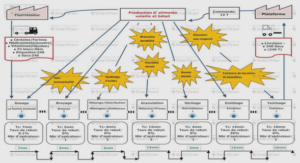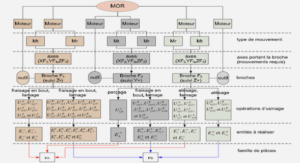FULL-SPACE IMPEDANCE HELMHOLTZ PROBLEM
In this appendix we study the perturbed full-space or free-space impedance Helmholtz problem, also known as the exterior impedance Helmholtz problem in 3D, using integral equation techniques and the boundary element method. We consider the problem of the Helmholtz equation in three dimensions on the exterior of a bounded obstacle with an impedance boundary condition. The perturbed fullplane impedance Helmholtz problem is a wave scattering problem around a bounded threedimensional obstacle. In acoustic obstacle scattering the impedance boundary-value problem appears when we suppose that the normal velocity is proportional to the excess pressure on the boundary of the impenetrable obstacle. The special case of frequency zero for the volume waves has been treated already in Appendix D, since then we deal with the Laplace equation. The two-dimensional Helmholtz problem was treated thoroughly in Appendix C. The main references for the problem treated herein are Kress (2002), Lenoir (2005), Ned´ elec (2001), and Terrasse & Abboud (2006). Additional related books and doctorate ´ theses are the ones of Chen & Zhou (1992), Colton & Kress (1983), Ha-Duong (1987), Hsiao & Wendland (2008), Kirsch & Grinberg (2008), Rjasanow & Steinbach (2007), and Steinbach (2008). Articles where the Helmholtz equation with an impedance boundary condition is taken into account are Ahner (1978), Angell & Kleinman (1982), Angell & Kress (1984), Angell, Kleinman & Hettlich (1990), Dassios & Kamvyssas (1997), Krutitskii (2003a,b), and Lin (1987). Theoretical details on transmission problems are given in Costabel & Stephan (1985). The inverse problem is studied in Colton & Kirsch (1981). The boundary element calculations can be found in the report of Bendali & Devys (1986) and in the article by Bendali & Souilah (1994). Applications for the impedance Helmholtz problem can be found, among others, for acoustics (Morse & Ingard 1961) and for ultrasound imaging (Ammari 2008). The Helmholtz equation allows the propagation of volume waves inside the considered domain, and when supplied with an impedance boundary condition it allows also the propagation of surface waves along the domain’s boundary. The main difficulty in the numerical treatment and resolution of our problem is the fact that the exterior domain is unbounded. We solve it therefore with integral equation techniques and the boundary element method, which require the knowledge of the Green’s function. This appendix is structured in 14 sections, including this introduction. The direct scattering problem of the Helmholtz equation in a three-dimensional exterior domain with an impedance boundary condition is presented in Section E.2. The Green’s function and its far-field expression are computed respectively in Sections E.3 and E.4. Extending the direct scattering problem towards a transmission problem, as done in Section E.5, allows its resolution by using integral equation techniques, which is discussed in Section E.6. These techniques allow also to represent the far field of the solution, as shown in Section E.7. A particular problem that takes as domain the exterior of a sphere is solved analytically in Section E.8. The appropriate function spaces and some existence and uniqueness results for the solution of the problem are presented in Section E.9. The dissipative problem is studied in Section E.10. By means of the variational formulation developed in Section E.11, the obtained integral equation is discretized using the boundary element method, which is described in Section E.12. The boundary element calculations required to build the matrix of the linear system resulting from the numerical discretization are explained in Section E.13. Finally, in Section E.14 a benchmark problem based on the exterior sphere problem is solved numerically.
Direct scattering problem
We consider the direct scattering problem of linear time-harmonic acoustic waves on an exterior domain Ωe ⊂ R 3 , lying outside a bounded obstacle Ωi and having a regular boundary Γ = ∂Ωe = ∂Ωi , as shown in Figure E.1. The time convention e −iωt is taken and the incident field uI is known. The goal is to find the scattered field u as a solution to the Helmholtz equation in Ωe, satisfying an outgoing radiation condition, and such that the total field uT , decomposed as uT = uI + u, satisfies a homogeneous impedance boundary condition on the regular boundary Γ (e.g., of class C 2 ). The unit normal n is taken outwardly oriented of Ωe. A given wave number k > 0 is considered, which depends on the pulsation ω and the speed of wave propagation c through the ratio k = ω/c The total field uT satisfies thus the Helmholtz equation ∆uT + k 2uT = 0 in Ωe, (E.1) which is also satisfied by the incident field uI and the scattered field u, due linearity. For the total field uT we take the homogeneous impedance boundary condition
Green’s function
The Green’s function represents the response of the unperturbed system (without an obstacle) to a Dirac mass. It corresponds to a function G, which depends on a fixed source point x ∈ R 3 and an observation point y ∈ R 3 . The Green’s function is computed in the sense of distributions for the variable y in the full-space R 3 by placing at the right-hand side of the Helmholtz equation a Dirac mass δx, centered at the point x. It is therefore a solution G(x, ·) : R 3 → C for the radiation problem of a point source, namely ∆yG(x, y) + k 2G(x, y) = δx(y) in D ′ (R 3 ). (E.14) The solution of this equation is not unique, and therefore its behavior at infinity has to be specified. For this purpose we impose on the Green’s function also the outgoing radiation condition (E.8). Due to the radial symmetry of the problem (E.14), it is natural to look for solutions in the form G = G(r), where r = |y − x|. By considering only the radial component, the Helmholtz equation in R 3 becomes





